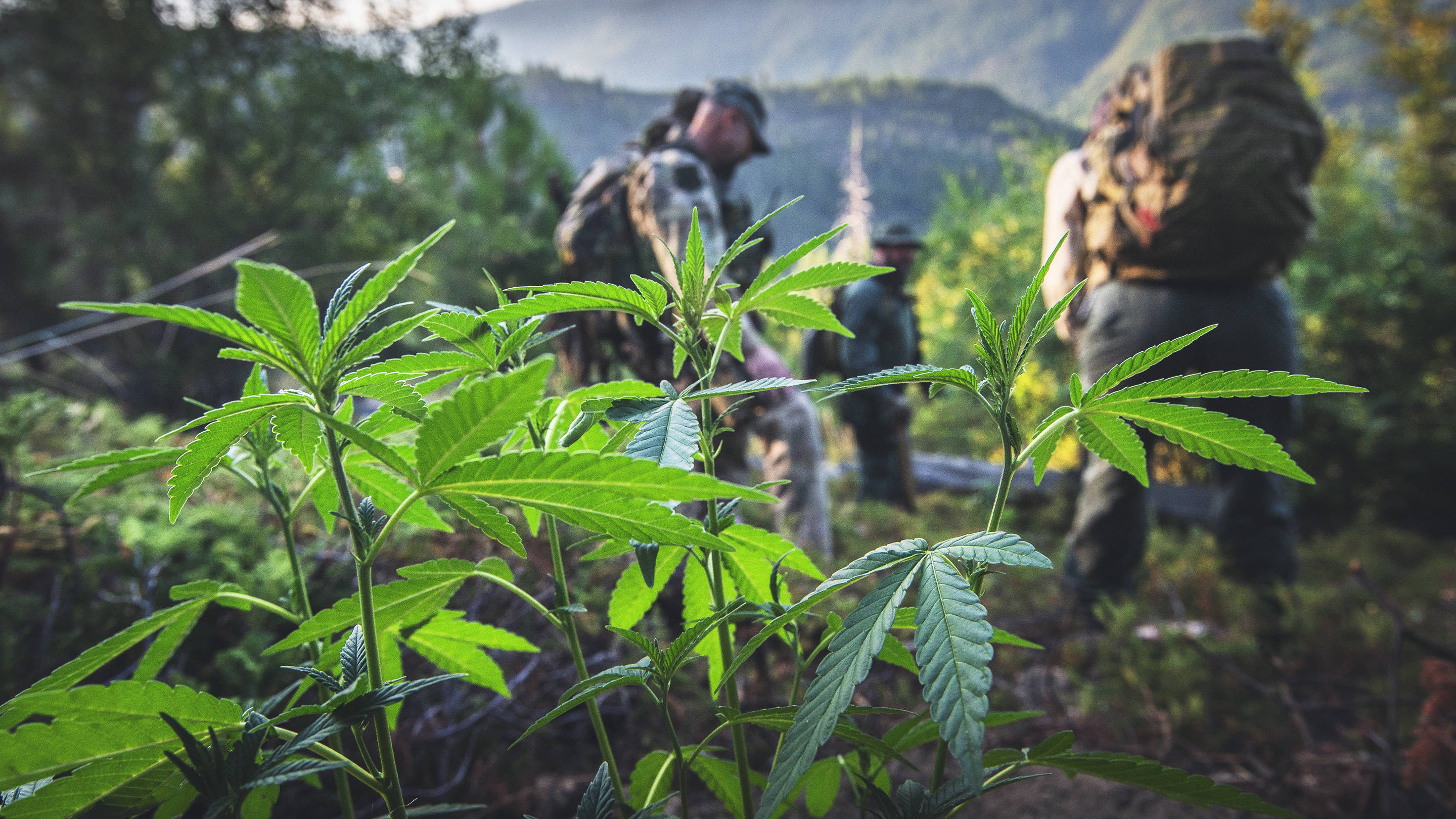
Protecting Pleasure: Inside the Fight for Safe Cannabis for All
Tainted grow operations are growing, but an unlikely group is doing whatever they can to stop it
Four members of the National Guard’s elite 95th Weapons of Mass Destruction Civil Support Team (WMD-CST) are stopped in a clearing deep in northern California’s Shasta-Trinity National Forest. They’re huddled together, decked in camouflage protective gear, chemically-resistant Butyl Rubber gloves and full-face respirators.
“What they have in that vial could kill all of us,” Gabriel nods at the cholinesterase inhibitor, which attacks both the peripheral and central nervous systems. “A quarter of a teaspoon at 38 percent [concentration] is enough to kill a 600-pound lion. What they’re working with right now is about a tablespoon.” Nine one-liter bottles were discovered at Plummer; that’s a total of over 608 tablespoons of the hazardous nerve agent—which is sadly unsurprising given that the use of Carbofuran and similarly toxic pesticides has increased dramatically over the past several years. In 2012, the IERC ecologists detected Carbofuran at 15 percent of the trespass grows they visited. In 2018, that number was closer to 85 percent.
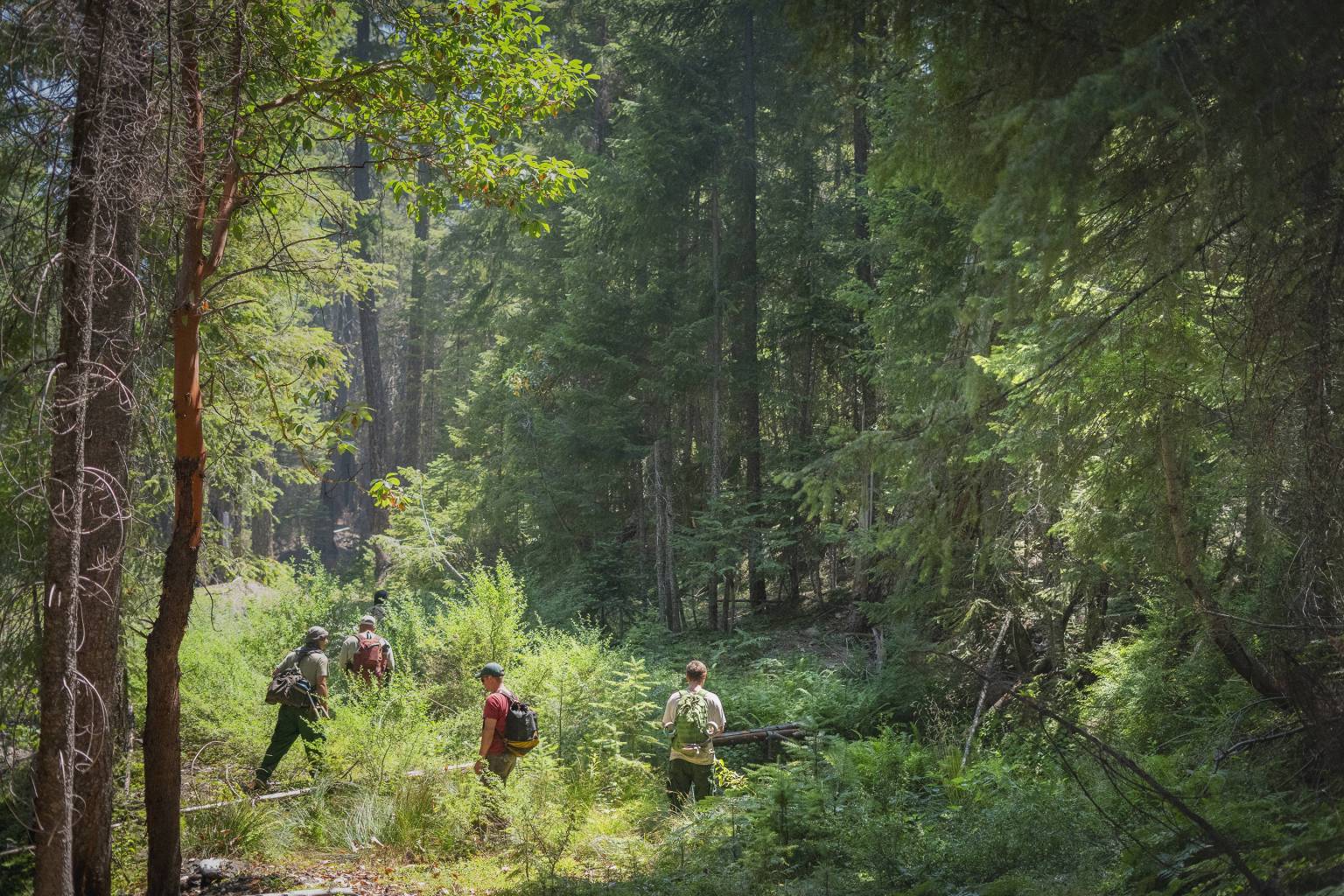
Still, even though there is no legal use in the United States (Canada and the European Union have banned it outright), one manufacturer of Carbofuran is FMC Corporation in Pennsylvania. From FMC’s labs, it makes its way to willing countries and is then brought into California via the cartel’s foot soldiers, who camp in the forest for months at a time. Over a successful season, a trespass grow can yield thousands of pounds of cannabis with little knowledge of exactly how small traces of Carbofuran will affect consumers—although the Environmental Protection Agency has stated that no amount of Carbofuran is safe for consumers. “What they have there, that would be used for, like, a 100 gallon sprayer,” Gabriel gestures again to the tablespoon in the vial, this time talking to Wengert. “The whole bottle could be used for up to 3,000 gallons of water. We found nine of those bottles.”
“Why would you ever need that much?” Wengert muses.
A quarter of a teaspoon at 38 percent [concentration] is enough to kill a 600-pound lion. What they’re working with right now is about a tablespoon.
It’s worked. In August of 2018, six members of an eradication team required hospitalization after Carbofuran exposure at a trespass grow in El Dorado National Forest. In one case, a Forest Service official went temporarily blind from the exposure and it’s unclear whether his sight will ever fully return. “I don’t think he was even cutting plants,” Wengert remembers of the incident. Because growers spray Carbofuran on marijuana plants as well as stir it into irrigation sources, handling plants is one of the easiest ways to become exposed. “He was bagging up trash at the site and...we don’t really know what happened,” she purses her lips. “He could have been doing everything right, that’s what’s so troubling.”
The incident resulted in the Forest Service being slapped with OSHA violations and, consequently, they’re reluctant to speak publicly about the dangers of their work. USFS denied requests for comment from Playboy.
While the 95th is seeing Carbofuran for the first time, Gabriel’s relationship with the pesticide began in 2009. He was tracking a threatened Pacific fisher (a kind of weasel that was being considered for endangered species listing) when he discovered a fisher carcass. When fishers die naturally in the wild, it’s typically from illness or injury, and evidence of either would be apparent on the carcass. But this fisher looked like it had been healthy and uninjured when it died. Gabriel brought it back to his lab for testing and determined it had been poisoned with rodenticide, or rat poison. As more poisoned fishers turned up—tracking collars indicated none of the fishers had gone near farms—Gabriel began reporting his findings, and his bafflement over the cause, at scientific conferences. At one of the conferences, a conservation officer told Gabriel about the rodenticides and pesticides often found at trespass cannabis grows. The mystery was solved and it would change the trajectory of the ecologist’s life.

Once IERC understood the cause of the fishers’ poisoning, they connected with law enforcement and, in 2015, entered into a cooperative agreement with counter-drug officers. Law enforcement deals with the illegal aspects of the grows; IERC focuses on the environmental consequences. Gabriel is the expert on navigating the chemical dangers of trespass grows. Briefing law enforcement about cannabis grows, however, is not a place Gabriel ever expected to land.
It’s the first time the 95th has been to a cannabis grow. They’re here to see if two handheld devices can accurately detect Carbofuran; IERC and law enforcement are in desperate need of a portable chemical detection device.
There’s no clear trail entrance, only a small dirt path near a fallen log. Before beginning the hike, Gabriel briefs the crew on what to do in the event of exposure. “We have an ER binder in the truck. If we have to medi-vac someone out, break the window, I don’t give a shit, and grab the binder because that binder should be transported with the individual. It will have all the MSDS [Material Safety Data Sheet] for every chemical we’ve ever detected, and it has a physician’s guide for pesticide poisoning. You’d be surprised, but [the nearest hospitals] have no clue about pesticide poisoning.”
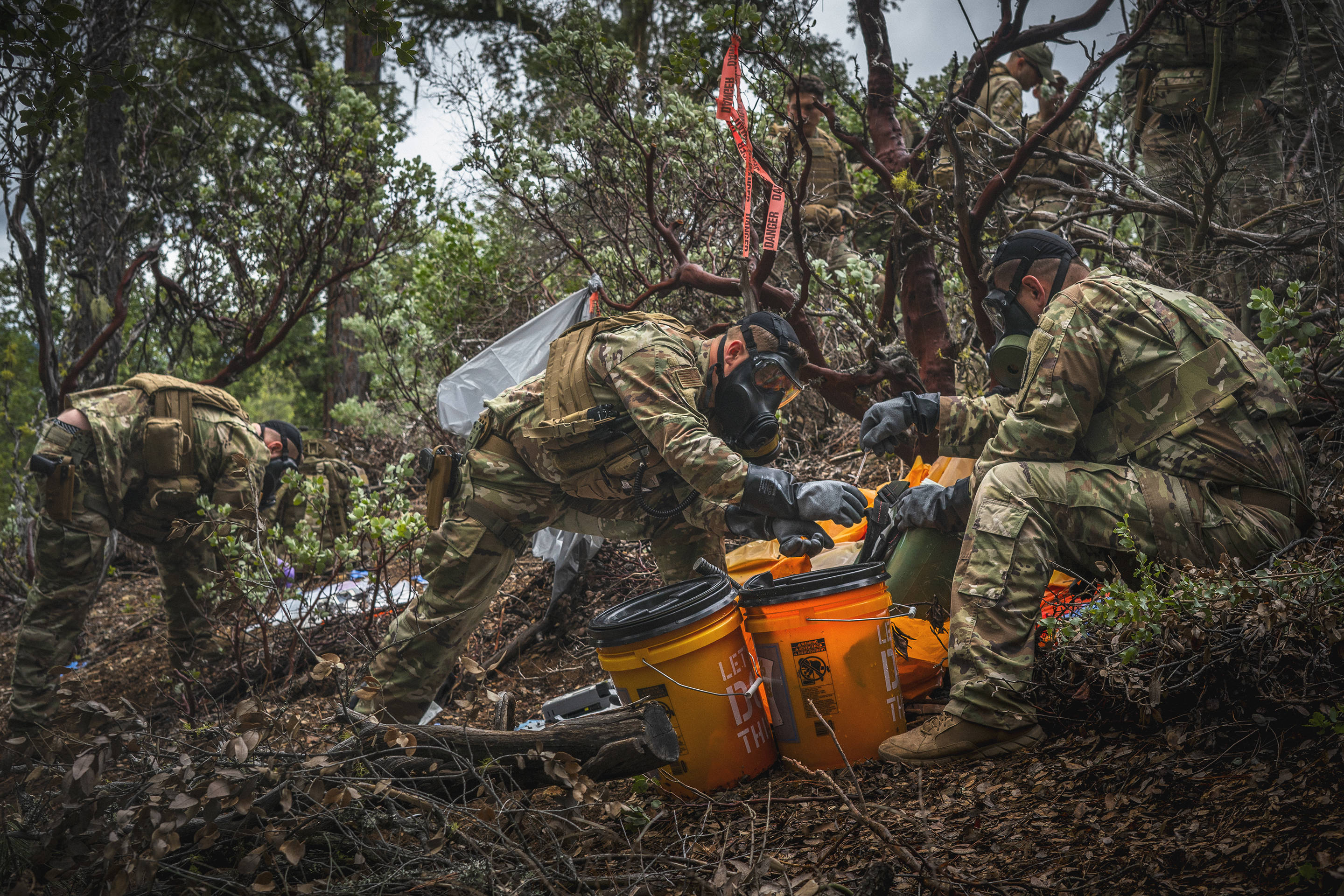

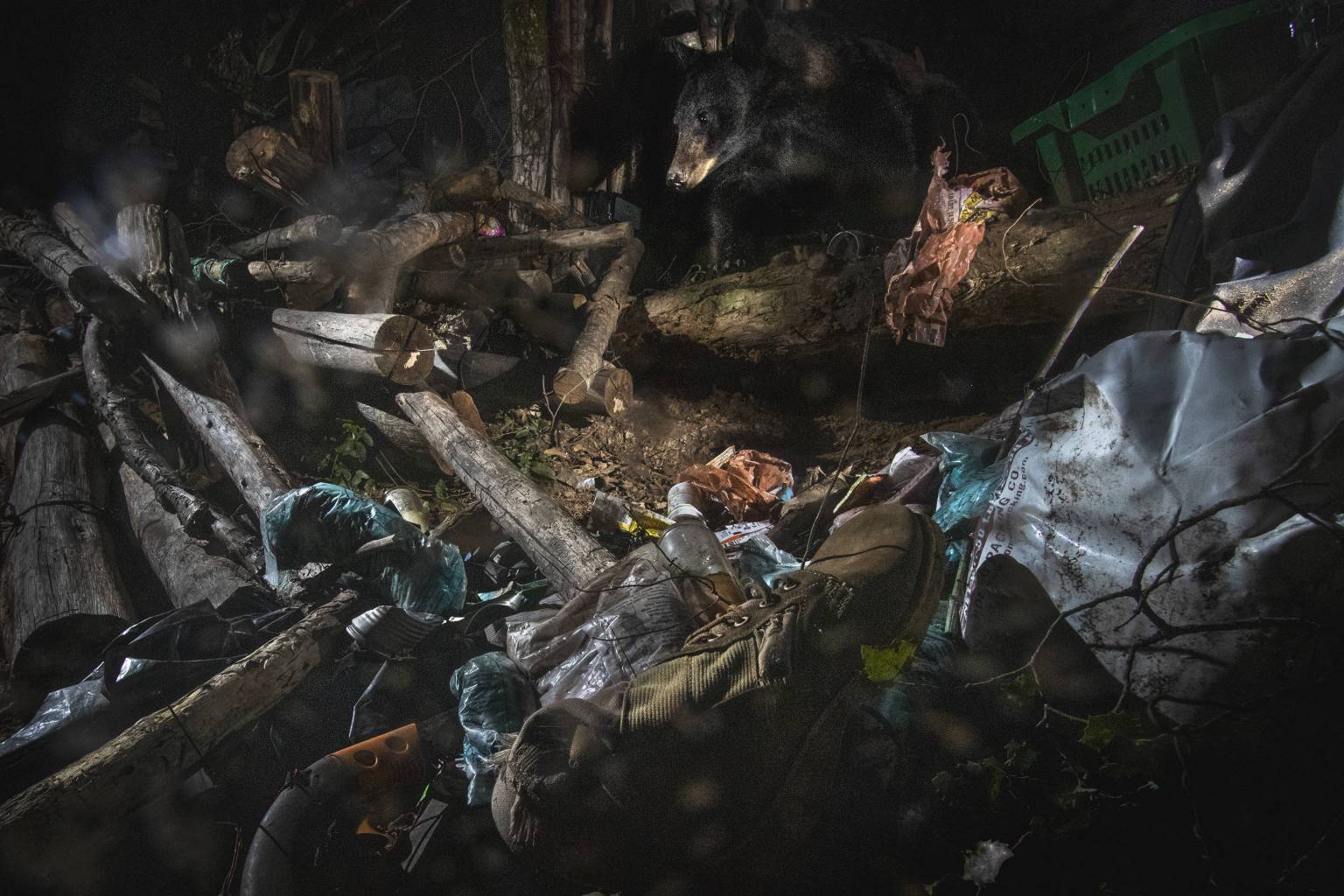
The grower at Plummer told Gabriel as much. “I asked why he had so much Carbofuran. He said, ‘We use it because we know you know what it is.’ He doesn’t mean me specifically,” Gabriel clarifies. “He thought I was law enforcement.”
“There are a lot of law enforcement who won’t work on illegal marijuana grows anymore,” Gabriel says. Which is, of course, the point.
The expense of getting into the legal cannabis market and the prevalence of drug trafficking in the area has resulted in overall confusion about unpermitted cannabis grows. “Trespass grows are always bad,” says Casey O’Neill, co-owner of HappyDay Farms in Mendocino County, “but it’s important to distinguish among trespass grows, unpermitted grows on private land that use [restricted/banned] pesticides, and unpermitted grows on private land that aren’t using them.”
We’ll find material labeled with specific tape and specific writing on it in one county in one national forest, and we’ll find material labeled with the exact same specific tape and writing in another county and another national forest. That’s how coordinated and organized this is.
It’s expensive to get into the regulated market, O’Neill says. There are many farmers for whom the cost is simply too high. O’Neill, who grows food on his farm as well as cannabis, says the regulatory cost of cannabis compared to food is astronomical. “You’ve got things like a $150 per pound agriculture tax, that I don’t have for the salad mix I grow right in the next bed.” These are not unrelated problems. “What makes it valuable to hike into public land and do one of these trespass grows,” he explains, “is the expense of producing [white market] cannabis.”
Law enforcement and growers like O’Neill disagree about the size of the barrier to getting into the white market, but they are unwavering in their agreement that, as O’Neill says, “there’s no place for horrific poisons in agriculture.”
While wildlife and law enforcement bear the brunt of the damage from these toxicants, residents of nearby towns (and smokers of contaminated black market weed) are also at risk. Three months after a Mendocino County Detective was hospitalized after being exposed to a similar pesticide, Metamidofos, nearby Trinity County issued a warning to the public about “a potential spill of suspected Carbofuran, Methamidophos, and Avermectin B1 pesticides into Mill Creek, a tributary to the Trinity River.” Residents were encouraged to seek medical treatment if they experienced symptoms like “nausea, vomiting, diarrhea, labored breathing, cyanosis, convulsions, and unconsciousness.”

Sisters of the Valley: The Nuns Whose Religion Is Cannabis
Playboy visited the sisters in Merced County to discover a new way of living

For an Even Better Time, Match Your Favorite Sex Positions to the Perfect Cannabis Strain
Whether you prefer missionary or cowgirl, Playboy wants to enhance your pleasure

Meet the Cannabis Chef of Uruguay
Gustavo Colombeck specializes in fine dining that with get you feeling fine (with the help of THC)

All About CBD Wellness: Because Cannabis Isn't Just About Getting High
In order to benefit from the cannabis wellness industry, Playboy sorts science from myth
Still, officials are more concerned with heavily concentrated toxicants killing endangered and threatened animals and poisoning nearby creeks, water theft and diversion, land erosion from irrigation, and the sheer amount of trash that simply requires more resources than these crews have. Getting a helicopter into a site for 3-4 hours to airlift out the thousands of pounds of trash and irrigation costs between $10,000–$12,000. That’s a tall order for counter-drug officials with dwindling cannabis resources, and a non-profit funded almost entirely by grants.

This perception once earned Gabriel and Wengert the derision of their neighbors: living in the Emerald Triangle means a significant number of people in their community depend on the cannabis industry. But as the locals increasingly became aware of the environmental problems–like the 2018 pesticide spill in the Trinity River, public opinion is changing.“It used to be that putting out a press release about a cleanup would get 80 percent negative feedback, 20 percent positive.” Gabriel says, “Now, if a story [about our work] runs locally, the reactions are 60 percent positive, 40 percent negative. If it runs nationally, it’s going to be the opposite. Nationally, people still think ‘they’re perpetuating the drug war.’”

Stricter penalties for using these toxicants would help; being caught with Carbofuran or a similarly restricted pesticide generally results in a fine. Gabriel gestures to the hillside where marijuana plants used to be, “Yeah, if you’re growing weed illegally on public land, there should be a punishment–-maybe 4-5 months.” He shrugs, “illegal is illegal. But if you get caught with a bottle of Carbofuran?” he frowns, “7-10 years.”
In the meantime, Gabriel stands in the arrested growers’ abandoned camp, just down the hill from where the 95th is conducting their tests. It’s littered with empty cans of tuna and beans, bags of fertilizer, pots and pans, plastic cups, toothbrushes, boxes of latex gloves, bottles of miracle grow, and sleeping bags. Despite being surrounded by massive, dense trees, the air smells faintly metallic. Gabriel thinks this is the scent of malathion, another pesticide. Black irrigation tubes sprawl across the hillside, connected to an impressively constructed cistern up the hill.
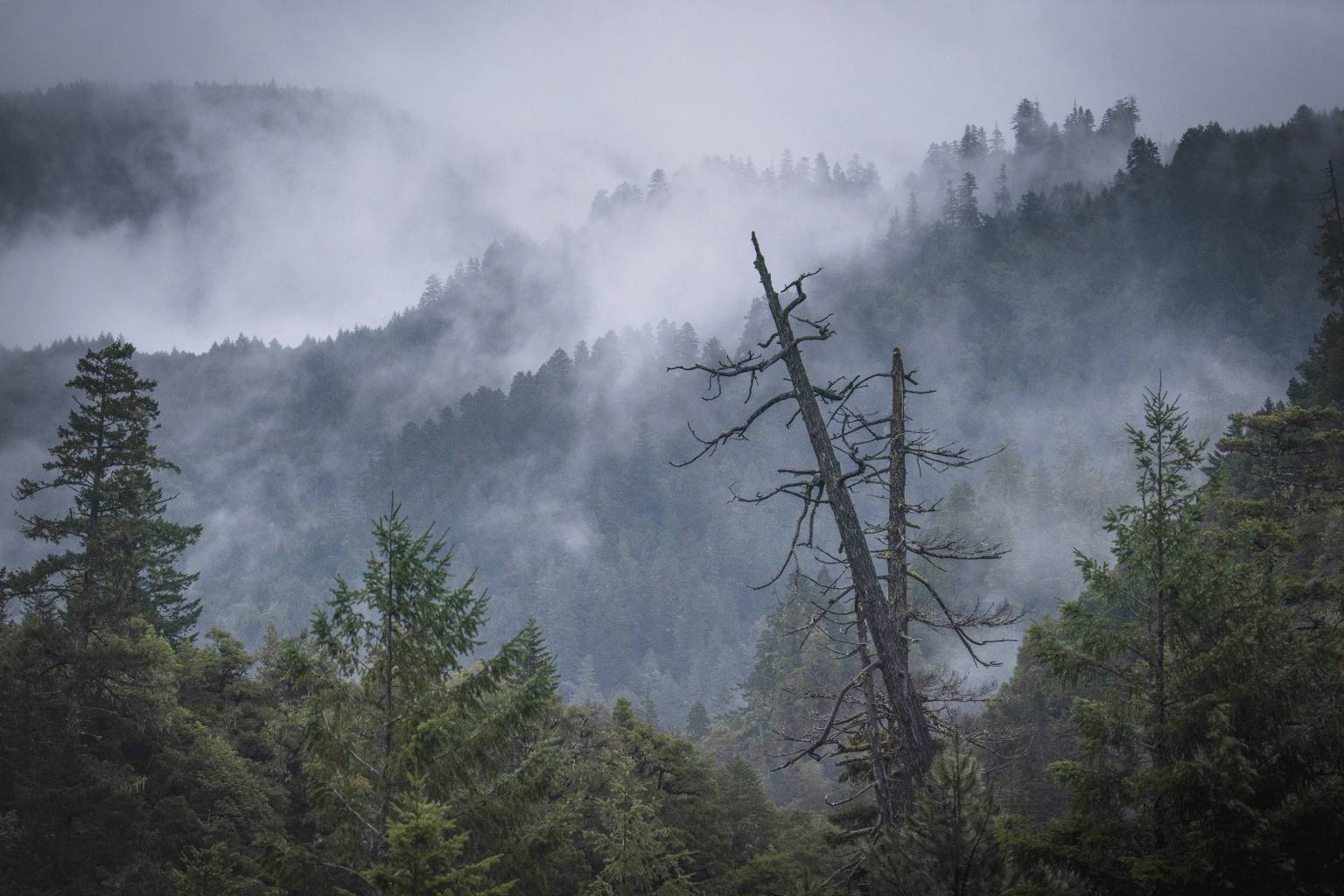
They know that there are thousands of sites like Plummer they won’t be able to get to this year; they know that animals will continue to die, hikers will be in danger, water sources will be contaminated, and tainted weed will flood the black market. It often feels like a very big, very dangerous game of whack-a-mole. But if they don’t do it, no one will.






